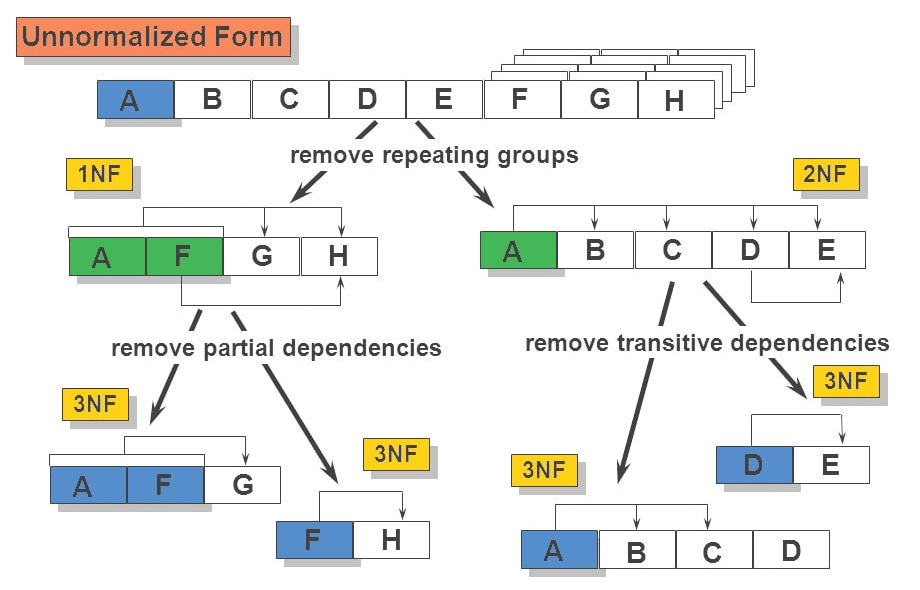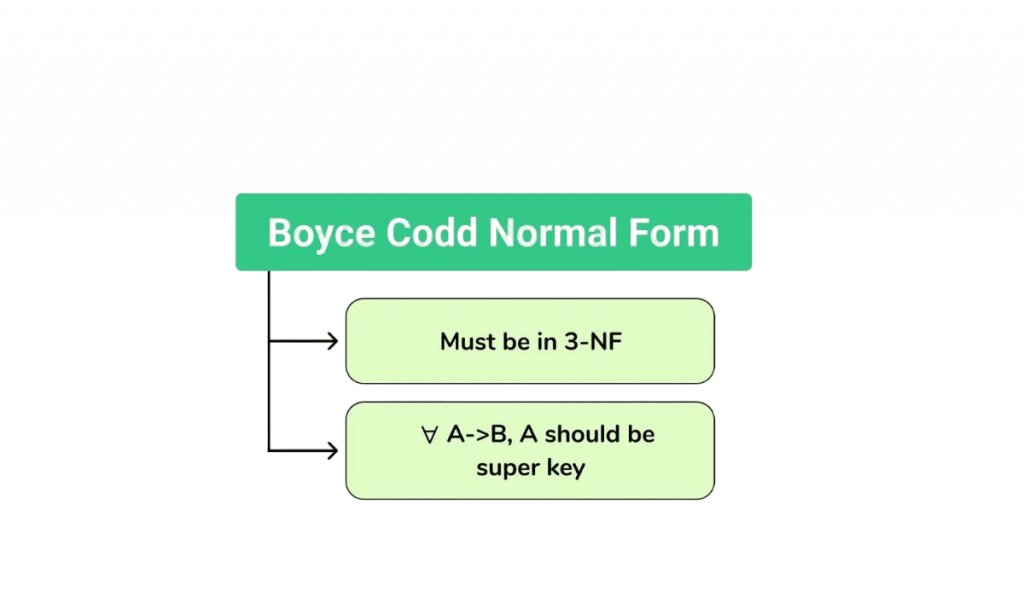
- Introduction to Database Normalization
- Objectives of Normalization in SQL
- Anomalies in Unnormalized Data
- First Normal Form (1NF)
- Second Normal Form (2NF)
- Third Normal Form (3NF)
- Boyce-Codd Normal Form (BCNF)
- Higher Normal Forms (4NF, 5NF)
- Denormalization: When & Why?
- Examples of Normalization
- Benefits and Limitations
- Conclusion
Introduction to Database Normalization
In the digital age, data is at the heart of virtually every business decision. Whether it’s customer records, it’s financial transactions or inventory logs, Database Training ensures data plays a critical role in ensuring organizations function effectively. However, merely storing data is not enough. It must be organized in a way that supports accuracy, consistency, and efficiency. This is where database normalization comes in.Database Objectives of Normalization in SQL is a systematic method of organizing data in a relational database to reduce redundancy and dependency. Developed by Edgar F. Codd, the creator of the relational database model, normalization involves dividing large, complex tables into smaller, manageable ones. These smaller tables are linked using relationships to ensure consistency and eliminate unnecessary duplication. By applying normalization rules, organizations can streamline their databases, enhance performance, and maintain data integrity. This process not only improves how relational databases operate but also contributes to better application performance and user satisfaction.
Do You Want to Learn More About Database? Get Info From Our Database Online Training Today!
Objectives of Normalization in SQL
The primary purpose of normalization is to create a structured and efficient database. It achieves this through several key objectives:
- Eliminate Data Redundancy: When data is stored more than once in a database, it consumes unnecessary storage and increases the risk of inconsistencies. Normalization ensures that each data point appears only once unless repetition is necessary.
- Enhance Data Integrity: Data integrity ensures that the data is accurate, consistent, and reliable. By organizing data logically, normalization reduces the chances of anomalies that can corrupt the database, while effective use of Data Warehouse Tools helps manage and maintain this integrity at scale.
- Simplify Data Maintenance: Managing data becomes significantly easier when there are clear rules and structures in place. Changes made in a normalized database are localized and less likely to create errors.
- Promote Logical Data Organization: A well-normalized database mirrors real-world entities and their relationships, making it easier for developers and stakeholders to understand the structure and retrieve relevant information.
- Improve Query Efficiency: Although joins might be necessary in normalized databases, they also reduce the amount of redundant data scanned during query execution, which can improve overall efficiency in many cases.
Anomalies in Unnormalized Data
Working with unnormalized or poorly normalized data can lead to several problems known as anomalies. These include:
- Insertion Anomaly: Occurs when inserting new data requires information that is not yet available. For example, if you cannot enter a new customer into a system without also assigning them a purchase order, it limits the flexibility of your database.
- Update Anomaly: This happens when changes in one area of a database require changes in multiple rows. Failing to update all related data can lead to inconsistencies. For example, if a supplier’s address is stored in multiple records and only one is updated, the data becomes unreliable.
- Deletion Anomaly: This anomaly arises when deleting data inadvertently removes valuable information. For example, deleting the last product in a table — a scenario that can be avoided with proper Database Training and understanding of relational dependencies.

These anomalies not only affect data accuracy but can also compromise the integrity and reliability of business operations that depend on that data.
Would You Like to Know More About Database? Sign Up For Our Database Online Training Now!
First Normal Form (1NF)
The first step in normalization is achieving First Normal Form (1NF). A table is said to be in 1NF if it meets the following conditions:
- It contains only atomic values (no arrays or nested tables).
- Each column contains values of a single type.
- Each record is unique and identified by a primary key.
- 1NF eliminates repeating groups and ensures that each cell in a table holds a single value.
This makes the Data becomes easier to search, sort, and filter. For instance, consider a table storing student information with multiple courses listed in one field, where using the Not Equal To in SQL can help exclude certain courses from query results. Converting this into First Normal Form 1NF would involve creating separate rows for each course-student combination. This change enhances clarity and enables more flexible querying.
Second Normal Form (2NF)
Second Normal Form (2NF) builds upon 1NF by addressing partial dependencies. A table is in 2NF if:
- It is already in 1NF.
- All non-key attributes are fully functionally dependent on the primary key.
In databases with composite keys (i.e., keys composed of two or more columns), partial dependencies occur when a non-key attribute depends only on part of the key. This redundancy can be resolved by dividing the table into smaller, related tables.For example, If a table stores student IDs, course codes, and instructor names, and the instructor only depends on the course, this creates a partial dependency a relationship that can be clearly represented and analyzed using an ER Diagram in DBMS to improve database design. By separating instructors into their own table, you maintain data integrity and avoid duplication.
To Earn Your Database Certification, Gain Insights From Leading Blockchain Experts And Advance Your Career With ACTE’s Database Online Training Today!
Third Normal Form (3NF)
A table reaches Third Normal Form (3NF) when:
- It is in 2NF.
- It has no transitive dependencies, meaning non-key attributes are not dependent on other non-key attributes.
Transitive dependency implies a chain of dependencies. For example, if a student’s department determines the department head, and both are stored in the student record, this creates a transitive dependency. If the department head changes, it must be updated in all relevant student records.To resolve this, you can move the department and its head into a separate table. This way, any update to the department head requires a single change, reducing the chance of inconsistencies and saving time.
Boyce-Codd Normal Form (BCNF)
BCNF, or Boyce-Codd Normal Form, is a more stringent version of 3NF. A table is in BCNF if:
- It is in 3NF.
- Every functional dependency has a super key on the left-hand side.
- A table is in 4NF if it is in BCNF and has no multi-valued dependencies.
- Multi-valued dependencies occur when one attribute depends on another independently of other attributes.
- A table is in 5NF when it is in 4NF and every join dependency is a result of candidate keys.
- 5NF eliminates data redundancy caused by reconstructing tables through complex joins.
- High-read environments: Applications requiring rapid data retrieval, such as dashboards or reporting tools, benefit from reduced query complexity.
- Data warehousing: Analytical systems often denormalize data for faster aggregation and simpler queries, and a good Guide on How to Run Function in SQL can help users efficiently perform these operations..
- Simplified application logic: Fewer tables reduce the need for complex joins in application code, streamlining development.

This rule ensures that no anomalies exist due to overlapping candidate keys. BCNF addresses certain anomalies that 3NF might not, In practice, violations of BCNF are rare but can occur in complex scenarios understanding the concept of Key in SQL Explained is essential to identifying and resolving such dependencies. such as scheduling, resource management, or many-to-many relationships. Ensuring BCNF prevents ambiguous dependencies and strengthens the integrity of the database.
Higher Normal Forms (4NF and 5NF)
Beyond BCNF, higher forms like Fourth Normal Form (4NF) and Fifth Normal Form (5NF) handle more complex data relationships.
Fourth Normal Form (4NF):For example, if a student can have multiple hobbies and enroll in multiple courses, storing both in the same table can cause redundancy. Splitting them into two separate tables of student hobbies and student courses solves this problem.
Fifth Normal Form (5NF):While 4NF and 5NF are rarely required in everyday relational databases design, they are crucial in systems requiring high data fidelity, such as ERP systems or complex analytics platforms.
Preparing for a Database Job? Have a Look at Our Blog on Database Interview Questions and Answers To Ace Your Interview!
Denormalization: When and Why?
Despite the benefits of normalization in SQL, there are scenarios where denormalization is preferred. Denormalization involves merging tables to reduce joins and improve read performance. It is especially useful in:
However, denormalization has its trade-offs. It can introduce data redundancy, increase storage requirements, and make updates more complex. Therefore, denormalization should be guided by specific performance needs and only applied after normalization is thoroughly understood and implemented.
Conclusion
Database normalization is more than a theoretical concept; it is a practical tool for ensuring that relational databases are well structured, efficient, and maintainable a principle emphasized in comprehensive Database Training . From eliminating anomalies to promoting logical consistency, each normal form plays a specific role in refining the relational database structure.While higher forms like 4NF and 5NF address more specialized cases, most practical applications achieve optimal balance with 3NF or BCNF. In cases where performance takes precedence over structure, selective denormalization may be appropriate.Understanding and applying Objectives of Normalization in SQL ensures that your databases remain scalable, reliable, and aligned with evolving business needs, ultimately supporting better decision-making and improved application performance.


